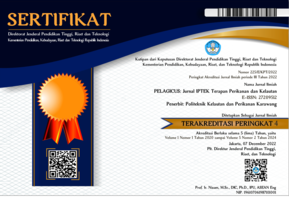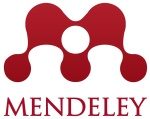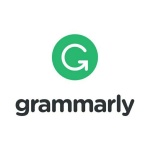Squid Resource Management (Loligo sp.) with a Bioeconomic Approach in Belitung Regency
Abstract
Squid is one of the catches that contributes a lot to the value of marine fishery production in the Belitung Regency. In addition, squid is one of the fish resources that are economically valuable. Until now, all squid production in Indonesia comes from catches in nature. This means that products derived from cultivation do not yet exist. If only relying on the effort of the results of the capture alone, it is not impossible that one day there will be overfishing. The purpose of this study is to know the bioeconomic aspects of squid resources in the Belitung Regency. Research has been carried out in the waters of the Belitung Regency of Bangka Belitung Islands Province, with research locations in 3 (three) sub-districts that become fishing bases for squid fisheries, namely Sijuk, Membalong, and Tanjung Pandan districts. The method used is Purposing Sampling with case studies taking primary data from interviewed fishermen directly and secondary data from the Belitung district marine and fisheries service and Tanjung Pandan Regency VAT. Gordon Schaefer's Bioeconomics Analysis yields a CMSY value of 34.522 tons/year and an EMSY of 16.105 ships/year. MEY condition was obtained at the time of CMEY value of 34.327 tons/year and EMEY value of 14.893 units of ships/year. The condition of OAE was obtained at the time of the COAE value of 9.616 tons/year and the EOAE value of 29.785 units of ships/year. The squid utilization rate in Belitung Regency has experienced overfishing in 2018 by 220%.
Keywords
Full Text:
PDFReferences
Cahyani RT, Anggoro S, Yulianto B. 2013. Potensi lestari sumberdaya ikan demersal (Analisis hasil tangkapan cantrang yang didaratkan di TPI Wedung Demak). In: Seminar nasional Pengelolaan Sumberdaya Alam dan Lingkungan "Optimasi Pengelolaan Sumberdaya Alam dan Lingkungan dalam Mewujudkan Pembangunan Berkelanjutan", 27 Agustus 2013. Universitas Diponegoro. 378-382.
Etika, Y. P., I. Triarso dan Sardiyatmo. 2015. Analisis Bioekonomi Perikanan Cumi-Cumi (Loligo sp) di Perairan Kota Tegal. Universitas Diponegoro, Semarang.
Gulland JA. 1991. Fish Stock Assessment. A Manual of Basic Methods. John Wiley & Son, Chichester.
Nabunome W. 2007. Model analisis bioekonomi dan pengelolaan sumberdaya ikan demersal (Studi Empiris Di Kota Tegal), Jawa Tengah. [tesis]. . Semarang (ID). Universitas Diponegoro.
Nazir, M. 2005. Metode Penelitian. Ghalia Indonesia, Jakarta.
Noordiningroom R, Anna Z, Suryana AAH. 2012. Analisis bioekonomi Model Gordon-Schaefer: Studi kasus pemanfaatan ikan nila (Oreochromis niloticus) di perairan umum Waduk Cirata Kabupaten Cianjur Jawa Barat. Jurnal Perikanan dan Kelautan 3 (3): 263-274.
Perangin-angin, R. 2020. Sustainability analysis of artisanal fisheries in the coastal area of Karawang regency. AACL Bioflux, 13 (4), 2137-2143.
Purwanto. 1988. Bio-Ekonomi Penangkapan Ikan: Model Statik. Oseana 13 (2): 63-72
Putri AK. 2013. Kajian Stok Sumber Daya Ikan Selar Kuning (Selaroides leptolepis) Cuvier dan Valenciennes yang Didaratkan di PPN Karangantu, Banten. [Skripsi]. Institut Pertanian Bogor, Bogor.
Rihi, F. A G. 2013. Analisis Bioekonomi Perikanan Tuna Madidihang (Thunnus albacares) Terhadap Kesejahteraan Nelayan di Kelurahan Bolok, Kabupaten Kupang, Provinsi Nusa Tenggara Timur. Skripsi. Institut Pertanian Bogor, Bogor.
Rudiana, E dan D. Pringgenies. 2004. Morfologi dan Anatomi Cumi-Cumi Loligo duvauceli yang Memancarkan Cahaya. Ilmu Kelautan. 9(2): 96–100. ISSN: 0853 – 7291.
Sirait, P. P. S., M. Basyuni dan Desrita. 2016. Pendugaan Potensi LestariKembung (Rastrelliger spp.) di Pelabuhan Perikanan Samudera Belawan Sumatera Utara. Universitas Sumatera Utara, Medan.
Sobari MP, Diniah, Widiarso DI. 2008. Analisis “Maximum Sustainable Yield” dan “Maximum Economic Yield” menggunakan bio-ekonomi Model Statis Gordon – Schaefer dari Penangkapan Spiny Lobster di Wonogiri. Jurnal Ilmu-ilmu Perairan dan Perikanan Indonesia 15 (1): 35-40.
Sulistiyawati ET, 2011. Pengelolaan Sumberdaya Ikan Kurisi (Nemipterus furcosus) Berdasarkan Model Produksi Surplus di Teluk Banten, Kabupaten Serang, Provinsi Banten. [Skripsi]. Institut Pertanian Bogor, Bogor.
Suseno, 2007. Presentasi Kebijakan Pengelolaan dan Pemanfaatan Sumberdaya Ikan, di Semarang. Departemen Kelautan dan Perikanan, Direktur Jendral Perikanan Tangkap, Direktur Sumberdaya ikan, Jakarta.
Theresia, S. M., Pramonowibowo dan D.Wijayanto. 2013. Analisis Bioekonomi Perikanan Cumi-Cumi (Loligo sp) di Pesisir Kabupaten Kendal. Journal of Fisheries Resources Utilization Management And Technology. 2(3): 100-110.
Widodo J, Suadi. 2006. Pengelolaan Sumberdaya Perikanan Laut. Gadjah Mada University Press, Yogyakarta.
DOI: http://dx.doi.org/10.15578/plgc.v3i2.11201
Refbacks
- There are currently no refbacks.

This work is licensed under a Creative Commons Attribution-ShareAlike 4.0 International License.
E-ISSN: 2720-9512
ISSN: 2715-9620












